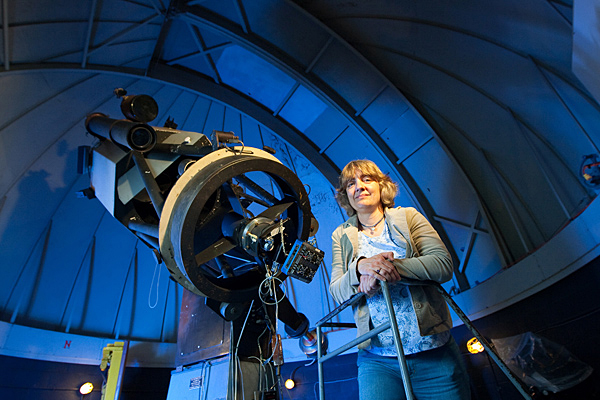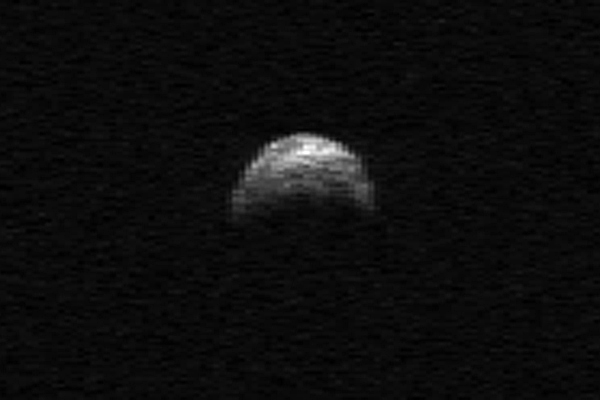Asteroid nears Earth
Are we in danger of a collision? UD astronomer shares her insights
11:43 a.m., Nov. 3, 2011--The asteroid 2005 YU55 will hurtle past Earth on Tuesday, Nov. 8. The University of Delaware’s Judi Provencal, assistant professor of physics and astronomy and director of the Delaware Asteroseismic Research Center (DARC), tells us more about this flying space rock.
Q. How big is this asteroid?
Research Stories
Chronic wounds
Prof. Heck's legacy
A. It is about 400 meters across, which is about a quarter of a mile. It is a carbonaceous or “C-type” asteroid, which is one of the most common types. This type of asteroid doesn’t reflect much light, so unfortunately the asteroid will not get very bright in the sky despite being close. Plus, it will appear to be very close to the sun for most of the time it is near the Earth/moon.
Q. Is there any danger of it colliding with the Earth or the moon?
A. There is no danger of a collision from this asteroid. While it will approach the Earth slightly closer than the moon’s orbit — within 0.85 times the distance of the moon — it is actually above the plane of the Earth/moon system. It is kind of similar to an airplane flying above the surface of the Earth. The airplane doesn’t crash because it is a few miles above the surface. The asteroid won’t hit us because it is flying above the “surface” of the Earth/moon system. (Sometimes, it is hard to remember that space is actually three-dimensional.) Plus, the asteroid will actually get much closer to the moon than to Earth.
Q. When was the last time an asteroid collided with the Earth or the moon?
A. The answer is complicated. Small particles impact with Earth’s atmosphere all the time. Just go outside any night, and you will see meteors. These are small objects (grain to small rock sized) that are burning up in the atmosphere. The latest reference I found was to an impact in Peru in 2007 (not a very big impact). But you do see these things in the news every once in a while. The Tunguska “event” of 1908, near a river of that name in Siberia, is believed to have resulted from the airburst of a bus-sized object in the Earth’s atmosphere. The most famous event I know about is Meteor Crater, in the Arizona desert, which happened about 50,000 years ago. Then of course there is the impact that supposedly resulted in the extinction of the dinosaurs.
Q. Will we be able to see this asteroid with the unaided eye?
A. Anyone who wants to see it will need a telescope — binoculars will not be enough. Astronomers use a magnitude system to measure the brightness of objects. In the magnitude system, the bigger the number the fainter the object. The faintest stars we see in the sky with just our eyes are of the 6th magnitude. This asteroid will only brighten to the 11th magnitude.
Q. What will astronomers be doing as the asteroid nears?
A. Astronomers are planning a campaign to create a very detailed map of the surface of the asteroid while it is nearby. The Arecibo (the world’s largest radio telescope) in Puerto Rico and another radio telescope facility in Goldstone, Calif., will be used to create maps of surface features as small as 4 meters (13 feet). That is pretty incredible for an asteroid.
Interview by Tracey Bryant












